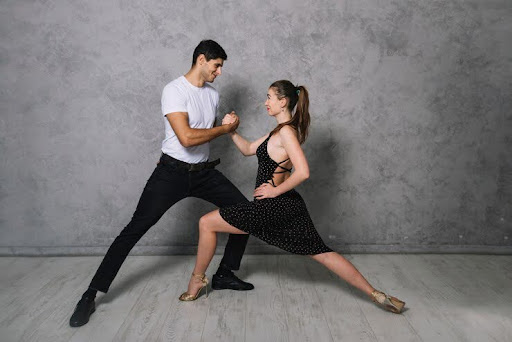6 Myths about Bachata dance classes

In the world of dance, Bachata stands as a global sensation, enticing enthusiasts with its Dominican origins. However, myths about Bachata dance classes persist, potentially deterring aspiring dancers.
Here we will dismantle six common misconceptions surrounding Bachata, aiming to inspire confidence and enthusiasm among beginners and seasoned dancers alike.
Whether you’re contemplating your first class or seeking to broaden your dance horizons, let’s dispel the myths and uncover the truths that make Bachata an accessible and enjoyable journey for all.
Myth 1: Bachata is Only for Experienced Dancers”
One prevailing myth suggests that Bachata is exclusively for experienced dancers. In reality, Bachata caters to dancers of all levels, including absolute beginners. Many dance studios offer beginner-friendly classes tailored to introduce participants to the fundamental steps and rhythms of Bachata. Instructors focus on building a strong foundation, ensuring that newcomers feel comfortable and confident on the dance floor from the very start.
Myth 2: “Bachata is Too Intimate for Some People”
Another misconception revolves around the perceived intimacy of Bachata dance. While Bachata does involve close contact between dance partners, it is essential to understand that the dance is built on a foundation of trust, connection, and communication. Instructors emphasize the importance of maintaining a comfortable distance and respecting personal boundaries. Bachata dance classes encourage a supportive and inclusive environment, fostering a sense of camaraderie among participants.
Myth 3: Bachata is Only for Latin Music Enthusiasts
Contrary to popular belief, Bachata is not exclusively danced to Latin music. While traditional Bachata music is rooted in the Dominican Republic’s cultural heritage, modern Bachata classes often incorporate a diverse range of music genres. Instructors may integrate popular songs from various cultures, offering a dynamic and eclectic dance experience. This myth highlights the evolving nature of Bachata, adapting to different musical styles and preferences.
Myth 4: You Need a Dance Partner to Attend Bachata Classes
Some individuals might hesitate to join Bachata beginner classes due to the misconception that a dance partner is a prerequisite. In reality, many classes welcome solo dancers, providing opportunities to rotate partners throughout the session. Solo participants can benefit from the chance to dance with various individuals, enhancing their adaptability and connection skills. Additionally, dance communities often organize social events where dancers can meet new partners and strengthen their dance network.
Myth 5: Bachata is Only for the Young and Fit
A prevalent myth surrounding dance classes, in general, is that they cater exclusively to the young and physically fit. Bachata, however, is an inclusive dance form that welcomes participants of all ages and fitness levels. Dance studios design classes with modifications to accommodate diverse abilities, ensuring that everyone can enjoy the physical and mental benefits of Bachata. The dance community thrives on diversity, embracing individuals from various backgrounds and age groups.
Myth 6: Learning Bachata Takes Too Much Time
Some potential dancers may shy away from Bachata classes, believing that learning the dance requires an extensive time commitment. Contrary to this myth, Bachata classes are often designed to accommodate busy schedules. Many studios offer short workshops, crash courses, and online classes, allowing participants to learn at their own pace. With dedication and consistent practice, dancers can make significant progress in a relatively short period, enjoying the learning process without feeling overwhelmed.
Conclusion
Bachata dance classes provide a welcoming space for individuals of all backgrounds and experience levels to explore the beauty of this captivating dance form.
By dispelling these myths, we hope to encourage more people to embrace the joy of Bachata, fostering a vibrant and diverse dance community where everyone can experience the thrill of movement, connection, and self-expression.

